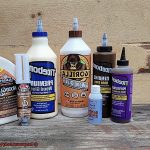Tired of drilling holes and messing with screws to attach your number plates? Well, guess what? There’s a sticky solution that might just make your life easier – silicone adhesive. This versatile stuff has gained popularity as an alternative way to securely stick number plates without the need for permanent fixtures. In this blog post, we’ll dive into the process of using silicone to mount number plates, discussing its pros and cons while keeping important considerations in mind.
Silicone adhesive offers a simple and clean method for attaching your number plates. All you have to do is apply a thin layer of silicone on the back of the plate and firmly press it against your vehicle’s surface. Once it sets, you’ll get a strong bond that can handle all kinds of weather conditions and vibrations on the road. Plus, since there’s no drilling involved, you won’t risk damaging your precious paintwork or ruining your ride’s aesthetics.
The best part about using silicone to stick number plates? It’s ridiculously easy. No fancy tools or hardware needed – just grab some silicone and get to work. Whether you’re a DIY enthusiast or simply clueless about mechanical stuff, this method suits everyone. And hey, silicone sticks like glue (pun intended) to various surfaces like metal, plastic, and fiberglass, so you’ve got plenty of options when it comes to where you want those plates.
But hold on a second – let’s not ignore some potential downsides when relying on silicone for securing number plates. Over time, exposure to sunlight and harsh weather may weaken the adhesive bond, causing your plate to fall off unexpectedly. To avoid this nightmare scenario, make sure you regularly check and reapply the silicone if needed. Also, keep in mind that different places might have specific rules regarding the use of silicone adhesives for number plates. So before going all-in with this method, do your homework and consult the local laws to stay on the right side of the road.
To sum it up, silicone adhesive offers a practical and convenient option for mounting number plates without screws or drilling. Its easy application, versatility, and ability to keep your ride looking sharp make it an attractive choice for many car owners. Just remember to stay vigilant by checking and reapplying the adhesive as needed, considering weather conditions and legal requirements. While silicone can be a sticky solution, always do your research to ensure a secure and compliant number plate attachment.
What is Silicone?
Contents
Silicone is a remarkable compound known for its versatility and wide range of applications. From its exceptional temperature resistance to its flexibility and chemical stability, silicone has become an indispensable material in numerous industries. In this comprehensive guide, we will delve into the different forms of silicone, explore its diverse uses, and understand why it is such a valuable resource.
Temperature Resistance:
Silicone’s ability to withstand extreme temperatures without losing its properties is truly remarkable. Whether enduring scorching heat or freezing cold, silicone remains unaffected, making it invaluable in industries such as aerospace, automotive, and electrical engineering.
Flexibility and Elasticity:
The flexibility and elasticity of silicone make it an ideal material for sealing and bonding applications. It can be easily stretched, bent, or compressed without losing its shape or breaking. This unique property allows silicone to create durable seals and provide long-lasting adhesion on various surfaces.
Forms of Silicone:
Silicone materials are available in liquid, gel, and solid forms, each with their own unique applications. Liquid silicone’s flowability and ability to capture intricate details make it perfect for molding and casting processes. Gel silicone finds its place in skincare products, adhesives, and lubricants. Solid silicone is employed for manufacturing parts and components that require durability and longevity.
Chemical Stability:
Silicone’s chemical stability is yet another notable attribute. It is resistant to UV radiation, ozone, moisture, and many chemicals. This resistance to degradation ensures that silicone-based products have a longer lifespan compared to other materials.
Applications:
Electrical and Electronics:
Silicone’s excellent electrical insulation properties make it a popular choice for insulating wires, cables, connectors, and electronic components.
Automotive:
Silicone-based adhesives are used in automotive manufacturing for bonding different parts such as mirrors, trims, gaskets, and weatherstripping.
Healthcare and Medical:
Silicone is widely used in medical devices, implants, and prosthetics due to its biocompatibility and ability to withstand sterilization processes.
Construction:
Silicone sealants are commonly used in construction for weatherproofing, joint sealing, and bonding materials such as glass, metal, and concrete.
Consumer Products:
From kitchenware to personal care items, silicone’s non-toxic and heat-resistant properties make it a popular choice for everyday products.
Why Silicone May Not Be the Best Choice for Number Plates
Silicone, known for its flexibility, durability, and resistance to extreme conditions, is a versatile material with numerous applications. However, when it comes to sticking number plates onto vehicles, silicone may not be the best option. In this blog post, we will explore several reasons why silicone adhesive may not be suitable for number plates, considering factors such as adhesive strength, weight-bearing capacity, UV degradation, and residue removal.
Adhesive Strength:
Silicone adhesives, while designed to create strong bonds between surfaces, are not specifically formulated for adhering to smooth and glossy surfaces like number plates. These plates, typically made of aluminum or plastic, have non-porous surfaces that pose challenges for silicone adhesives. As a result, poor bonding occurs and the number plate may detach.
Weight-Bearing Capacity:
Number plates can be heavy depending on their size and material. Silicone adhesives may lack the necessary strength to hold up the weight of the number plate, especially when subjected to external forces like wind and vibrations while driving. This can result in the number plate becoming loose or even falling off completely, causing potential safety hazards.
UV Degradation:
Constant exposure to sunlight can cause silicone adhesives to degrade over time. The UV radiation from sunlight can make the adhesive brittle and compromise its ability to bond effectively. Consequently, the number plate may become loose or detached due to the weakened bond, risking loss or damage.
Residue Removal:
Removing number plates attached with silicone adhesives can be a challenging task. These adhesives often leave behind stubborn residue that is difficult to clean. This residue can mar the appearance of your vehicle’s surface and require additional effort to remove completely.
Recommended Alternatives to Silicone Adhesives
We have the perfect alternatives to meet your sticking needs. In this blog post, we will explore the wonderful world of adhesive options that are more suitable for attaching number plates to vehicles.
First on our list is double-sided tape, the superhero in the realm of adhesives. Designed specifically for bonding two surfaces together, it provides a strong and reliable hold. With its ease of use, mess-free application, and ability to withstand various weather conditions, double-sided tape is a top contender for sticking number plates. Say goodbye to plate detachment woes.
Next up is adhesive foam tape, the cushioning champion. Made from foam with adhesive on both sides, it not only offers excellent bonding strength but also provides a bit of flexibility and vibration dampening. This makes it an ideal option for sticking number plates securely while protecting them from external forces. Enjoy peace of mind knowing your plate is firmly attached, even on bumpy roads.
For those seeking a more permanent solution, look no further than epoxy adhesive. Known for its exceptional bonding strength and durability, epoxy adhesives are resistant to moisture, heat, and chemicals. These qualities make them perfect for outdoor applications. However, be prepared for a longer curing time and the need to mix the components before use. But trust us, it’s worth it for a long-lasting hold.
If you’re in the market for an adhesive specifically formulated for vehicle trims and body moldings, automotive trim adhesive is your go-to option. This specialized adhesive provides a strong bond that can withstand extreme temperatures and vibrations. Whether you choose to apply it with a caulk gun or brush, rest assured that your number plate will stay put no matter what.
Last but not least, let’s not forget about good old mechanical fasteners such as screws or bolts. While they do require drilling holes into your vehicle’s bodywork, they offer an unbeatable level of strength and security. Just make sure to align and position everything perfectly before drilling to avoid any unwanted damage.
Double-Sided Automotive Tape
Well, fret no more because we have the perfect solution for you – double-sided automotive tape. This remarkable adhesive superhero is here to save the day and keep your number plate firmly attached to your vehicle. So buckle up and let’s dive into the advantages of using this incredible tape.
Advantages of Double-Sided Automotive Tape:
Effortless Installation:
Say goodbye to drilling holes or waiting for glue to dry. Double-sided automotive tape is a breeze to use. Simply cut it to size, apply it to the back of your number plate, and voila. You’re good to go. This hassle-free process saves you time and effort, giving you more time to hit the road.
Unyielding Strength:
This tape means business when it comes to bonding surfaces. Its robust adhesive ensures a secure attachment, even during high-speed drives or in harsh weather conditions. So wave goodbye to wobbly number plates – this tape keeps them right where they belong, no matter what.
Designed for Durability:
Double-sided automotive tape is built to withstand the elements. It’s resistant to water, heat, and those pesky UV rays that can cause other adhesives to wither away. So rest assured that your number plate will stay put for the long haul, rain or shine.
Vibration Resistance:
![]()
Road vibrations can be a real headache when it comes to keeping your number plate in place. But fear not. Our trusty double-sided automotive tape offers vibration resistance, ensuring that your plate stays securely attached no matter how bumpy the road gets. Smooth sailing ahead.
Clean and Prep for Success:
To ensure maximum adhesion, it’s important to prepare the surface properly. Make sure it’s clean and free from dirt, oil, or wax before applying the tape. This way, you’ll guarantee a bond that’s as strong as can be, giving you peace of mind on every journey.
Adhesive Pads and Brackets
Well, look no further. Adhesive pads and brackets are here to revolutionize your experience. Let’s delve into the world of these innovative solutions and explore their advantages and disadvantages.
Adhesive pads are the epitome of convenience. With a quick and easy installation process, they offer a hassle-free experience. Simply peel off the backing, stick the pad onto the back of your number plate, and press it firmly onto your vehicle. It’s as simple as that.
The removability of adhesive pads is one of their biggest advantages. When you’re ready for a change or want to preserve your vehicle’s pristine paintwork, these pads can be easily removed without leaving any residue behind. No more worries about damaging your precious car.
Moreover, adhesive pads are designed to withstand various weather conditions, including scorching heat, bone-chilling cold, and relentless moisture. When Mother Nature throws her worst at you, rest assured that your number plate will stay firmly in place.
However, there are a couple of things to consider. Adhesive pads may not provide the same level of security as brackets. If you prioritize maximum stability and peace of mind, brackets might be a better option for you. Additionally, adhesive pads may not work well on all surfaces or types of number plates. It’s crucial to select the appropriate adhesive pad for your specific needs.
Now let’s talk about brackets—a true game-changer in the world of number plate attachments.
Brackets offer unparalleled security. With their robust attachment, they ensure that your number plate stays firmly in place even on the bumpiest roads. Say goodbye to worrying about losing your plate while navigating treacherous terrains.
Durability is another key advantage of brackets. Made from top-notch materials like stainless steel or plastic, these sturdy attachments can withstand wear and tear over time. They’ll keep your number plate secure for the long haul.
However, there are a couple of trade-offs. Installing brackets requires attaching them to the back of your number plate using screws or other fastening methods. This process may take a bit more time compared to the simplicity of adhesive pads. Additionally, it’s crucial to choose brackets that are compatible with your specific vehicle make and model to ensure a proper fit.
Instructions for Installing Number Plates
Installing number plates properly is not only a legal requirement in most jurisdictions, but it also ensures your vehicle’s identification is clearly displayed. While there are various methods available, using silicone adhesive offers a secure and long-lasting bond. In this step-by-step guide, we will take you through the process of installing number plates with silicone adhesive, ensuring a professional and durable installation.
Materials Needed:
- Tube of high-quality silicone adhesive (specifically designed for automotive use)
- Caulking gun
- Cleaning solution
- Cloth or rag
Step-by-Step Instructions:
Step 1: Prepare the Surface
Thoroughly clean the surface of the vehicle where the number plate will be attached. Use a cleaning solution to remove any dirt, grease, or residue. This step is crucial as it ensures proper adhesion and a strong bond.
Step 2: Apply Silicone Adhesive
Once the surface is clean and dry, load the caulking gun with the silicone adhesive. Apply a line of adhesive along the top edge of the number plate. Use the caulking gun to ensure an even and precise application.
Step 3: Position and Press Firmly
Carefully position the number plate on the vehicle, making sure it is aligned properly. Press it firmly against the surface to create a strong bond with the adhesive. Hold it in place for a few seconds to ensure proper adhesion.
Step 4: Secure All Edges
Repeat the process for the remaining edges of the number plate, applying silicone adhesive and pressing firmly. Ensure that all edges are securely bonded to the vehicle’s surface.
Step 5: Allow Proper Drying Time
Allow the silicone adhesive to dry completely according to the manufacturer’s instructions before driving the vehicle. This ensures that the bond is fully set and secure. Follow any specific guidelines regarding drying time and additional precautions.
Additional Tips:
- Choose a high-quality silicone adhesive specifically designed for automotive use to ensure durability and longevity.
- Avoid touching the adhesive or applying excessive pressure on the number plate until it has fully cured.
- Regularly check the number plate for any signs of loosening or damage. If necessary, reapply silicone adhesive or consider using an alternative method.
Cleaning the Surface Before Applying Adhesive
Achieving a strong and long-lasting bond when applying adhesive is dependent on proper surface preparation. Whether you’re installing number plates or undertaking a DIY project, taking the time to clean the surface beforehand is of utmost importance. In this comprehensive guide, we will walk you through the step-by-step process of cleaning various surfaces, providing invaluable tips along the way.
Step 1: Removing Dirt and Debris
Begin by wiping away loose particles using a clean cloth or sponge. This initial step ensures that contaminants do not interfere with the adhesive bond. Stubborn stains or grime can be eradicated using a mild detergent or soap with water, taking care to select the appropriate cleaning method for different surfaces to prevent any damage.
Step 2: Drying the Surface
After cleaning, it is crucial to thoroughly dry the surface before applying adhesive. Moisture poses a significant threat to bond strength. Safeguard against this by using a clean, dry cloth to eliminate any residual moisture or allow the surface to air dry naturally.
Step 3: Preparing Uneven Surfaces
To tackle rough or uneven areas that may hinder adhesion, consider sanding or filing them down. This simple act creates a smooth and even surface, facilitating optimal adhesion. Remember to adhere to safety precautions and use suitable tools for this step.
Step 4: Removing Existing Adhesive Residues
Before applying new adhesive, eliminate any remnants of previous adhesive from the surface. Refer to manufacturer instructions and employ adhesive removers or solvents accordingly. After removing residues, ensure the surface is thoroughly cleaned and dried.
Step 5: Ensuring a Contaminant-Free Surface
A contaminant-free surface is vital for successful adhesive application. Dust, grease, oil, and other contaminants must be eradicated entirely. Devote ample time to inspecting and meticulously cleaning the surface to prevent any residue from compromising the bond.
Step 6: Applying Adhesive
With a clean and prepared surface, you are now ready to apply the adhesive. Carefully follow the manufacturer’s instructions regarding the specific adhesive being used. Apply an even layer of adhesive, ensuring complete coverage across the surface.
Step 7: Allowing Sufficient Drying or Curing Time
To optimize results, allocate enough time for the adhesive to dry or cure fully. This crucial step ensures that the bond is robust and secure before subjecting it to stress or pressure. Always consult the manufacturer’s instructions for the recommended drying or curing time.
CCLgm5JwfjA” >
Conclusion
In conclusion, using silicone to stick number plates is not recommended. While silicone may seem like a convenient option due to its adhesive properties, it is not specifically designed for this purpose. Number plates require a strong and durable adhesive that can withstand various weather conditions and vibrations. Silicone may not provide the necessary bond and could result in the number plate falling off or becoming loose over time.
Instead, it is advisable to use specialized number plate adhesives or mounting kits that are specifically designed for this task. These products are formulated to provide a secure bond between the number plate and the vehicle’s surface, ensuring long-lasting adherence.
Furthermore, using silicone to stick number plates may also be illegal in some jurisdictions. Many countries have strict regulations regarding the correct installation of number plates, including the type of adhesive used. Using an improper adhesive could lead to fines or legal issues.
To ensure proper installation and compliance with regulations, it is best to consult with local authorities or professional installers who can provide guidance on the appropriate methods and materials for attaching number plates securely.
In summary, while silicone may have its uses in various applications, it is not suitable for sticking number plates.





